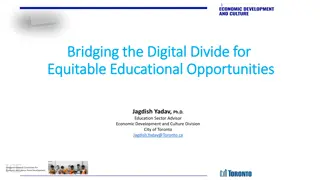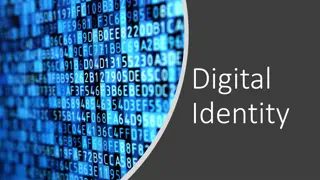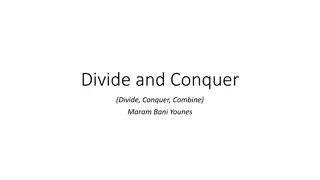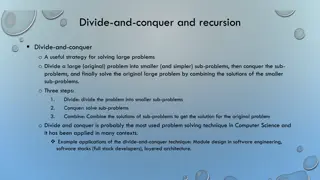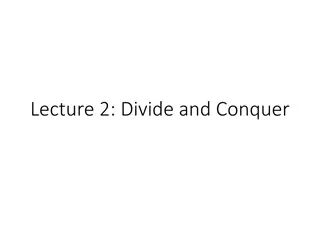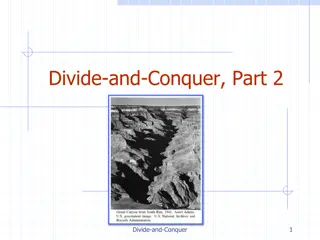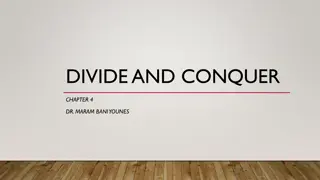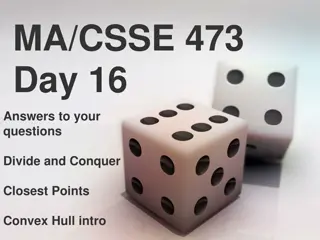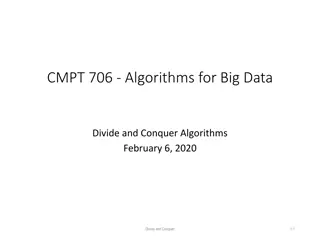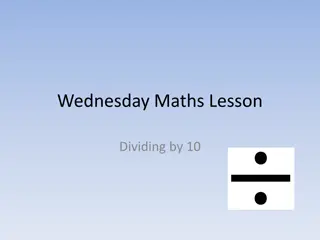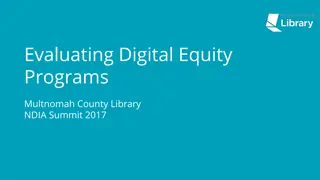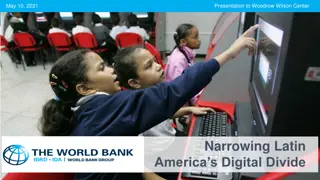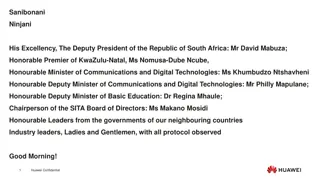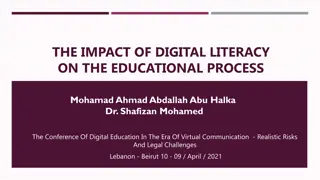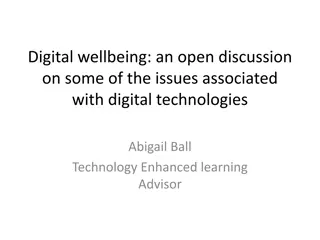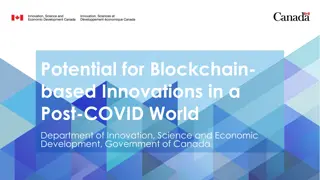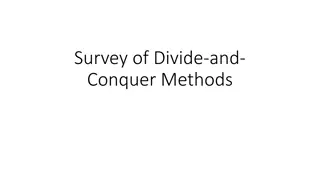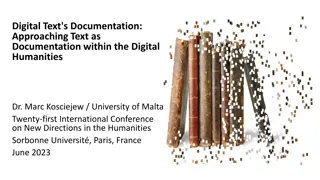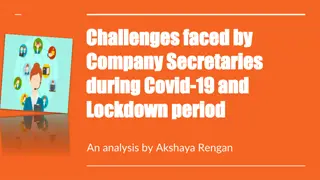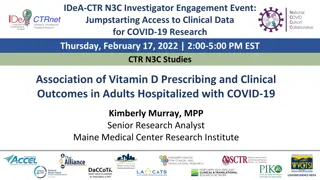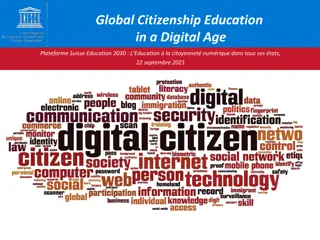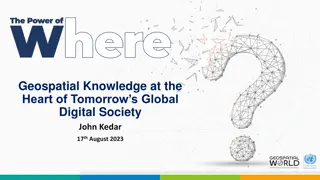Addressing the Digital Divide in the Age of COVID-19
This legal code highlights the digital disparities in America, where a significant percentage lacks access to fixed broadband, particularly in rural and tribal areas. Initiatives like the Rural Digital Opportunity Fund (RDOF) and 5G Fund aim to bridge the gap by providing high-speed internet to underserved communities through funding and auctions.
Download Presentation

Please find below an Image/Link to download the presentation.
The content on the website is provided AS IS for your information and personal use only. It may not be sold, licensed, or shared on other websites without obtaining consent from the author. Download presentation by click this link. If you encounter any issues during the download, it is possible that the publisher has removed the file from their server.
E N D
Presentation Transcript
LEGAL CODE: The Digital Divide in the Time of COVID-19 Giulia McHenry Chief, Office of Economics and Analytics Federal Communications Commission
The Digital Divide: Access and Adoption Overall, just over 5% of Americans lack access to fixed broadband at speeds of at least 25/3Mbps, BUT 22% of Rural Americans lack access to such speeds Approximately 27% of Americans on Tribal lands lack access to such speeds Approximately 35% of Americans with access have not adopted 25/3 fixed service, with significantly fewer adopting in rural and tribal areas 31% non-adoption in urban core; just over 40% in non-urban core areas In Tribal lands, 56% of Americans have not adopted 25/3 broadband 44% non-adoption in urban core Tribal lands and just over 60% non-adoption in non- urban core Tribal lands 79% of Americans ages >3 used the Internet from some location in 2019. 2
Rural Digital Opportunity Fund (RDOF) Auction 904: www.fcc.gov/auction/904 $20.4 billion fund that will bring high speed, fixed broadband service to rural homes and small businesses who do not have it RDOF will prioritize high network speeds and lower latency Phase I Auction: Bidding to begin tomorrow (10/29) Over 6 million homes and businesses in census blocks that are entirely unserved by speeds of 25/3Mbps to be targeted Phase II Auction -- Will cover locations in census blocks that are partially served or were not covered in Phase I RDOF builds on the success of the Universal Service High Cost program s Connect America Fund through its reverse auctions 3
The 5G Fund 5G Fund Report and Order adopted yesterday (10/27) The 5G Fund aims to ensure that rural Americans enjoy the same benefits from our increasingly digital economy as their urban counterparts Two-phase auction that targets support for deploying 5G in areas without an unsubsidized provider of either LTE or 5G mobile broadband 10-year term of support with a budget of $9 billion Phase I will provide up to $8 billion with $680 million set aside for bidders offering to serve Tribal lands Phase II will make at least $1 billion available for deployment that targets the facilitation of precision agricultural technologies The 5G Fund will require winning bidders to deploy networks capable of providing speeds of at least 35/3 Mbps 4
Digital Opportunity Data Collection (DODC) FCC Website for DODC: https://www.fcc.gov/digital-opportunity-data- collection-dodc Publicly available, web-based map that shows where fixed broadband service is available and where it is not on a granular level Based off geospatial coverage map data submitted by fixed broadband providers, showing the areas where each provider makes broadband available Will inform the FCC on decisions about which areas of the country should be eligible for USF broadband expansion support Includes crowd-sourcing portal to allow all stakeholders, to provide input on the accuracy of the data submitted by the providers 5
The FCC & Getting America Connected E-Rate: Keeping Schools and Libraries Connected This month, a first wave of funding was provided in the amount of $1,366,378 in E- Rate funding for 291 schools serving over 220k students in 32 states and Puerto Rico to help face the demand schools across the county are facing as students and teachers adapt to the challenges posed by COVID-19 (Chairman Pai) The FCC also enabled hundreds of rural broadband providers to offer discounts and service upgrades to families who participate in the National School Lunch Program Lifeline: Helping Connect Low-Income Consumers For qualifying low-income consumers, Lifeline provides a discount off eligible services The FCC extended waivers governing various rules that would require disconnection from the Lifeline program through the end of November in order to ensure that low- income Americans in rural areas and on Tribal lands continue to receive their Lifeline support 6
The FCC &COVID-19 Initiatives FCC COVID-19 Website: https://www.fcc.gov/coronavirus Keeping Americans Connected Pledge 785 service providers signed onto Chairman s Pai s pledge to keep Americans connected at the beginning of the pandemic through the end of June Chairman Pai has since sent a letter to Congress asking for legislation to ensure that all Americans remain connected until the COVID-19 emergency ends https://www.fcc.gov/keep-americans-connected Telehealth In April, the FCC adopted an Order establishing the COVID-19 Telehealth Program Funding was made available to public and non-profit health care providers, both in rural and non-rural areas The COVID-19 Telehealth Program funded a broad range of connected devices and services necessary for telehealth On July 8, 2020, the $200 million in appropriate funds were exhausted, but the program awarded funding to 539 applications from healthcare providers in 47 states, DC, and Guam, including rural and Tribal areas 7




